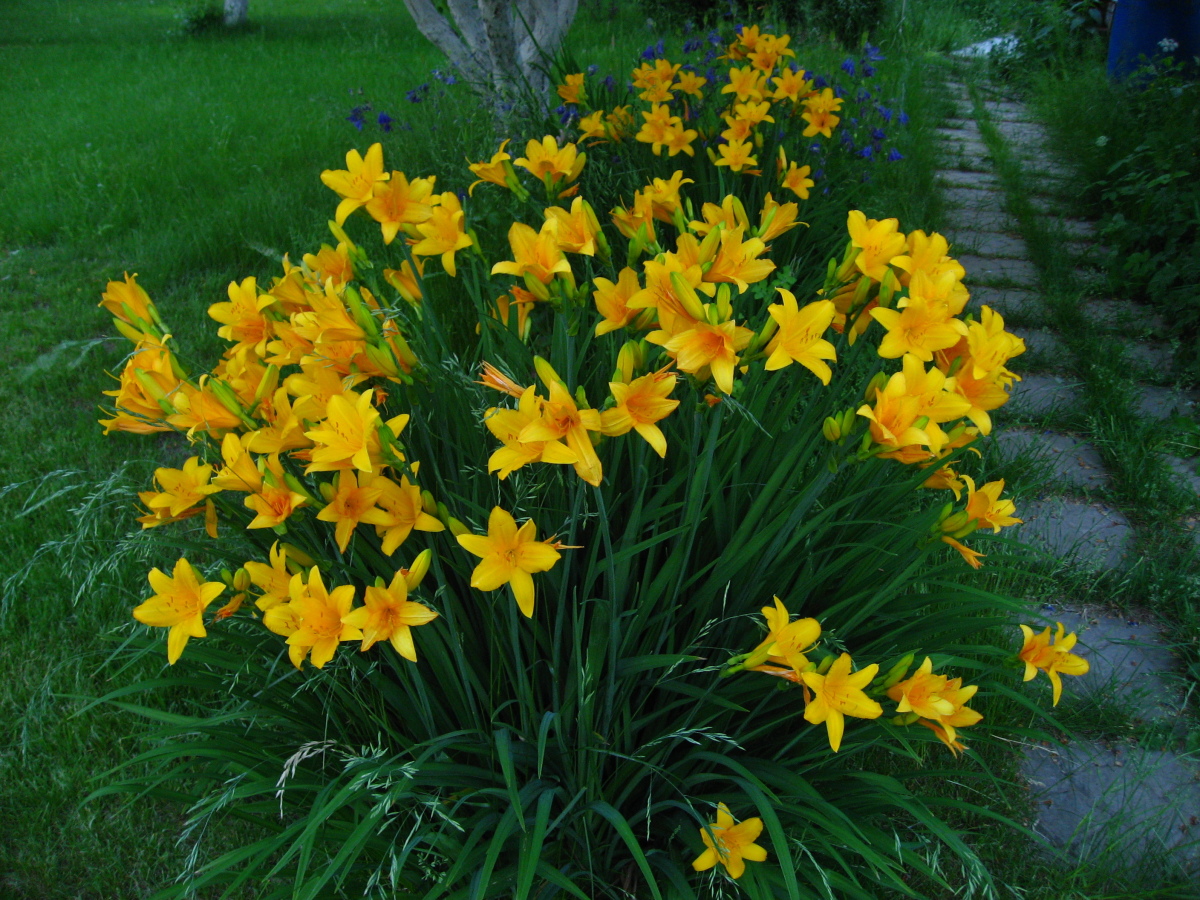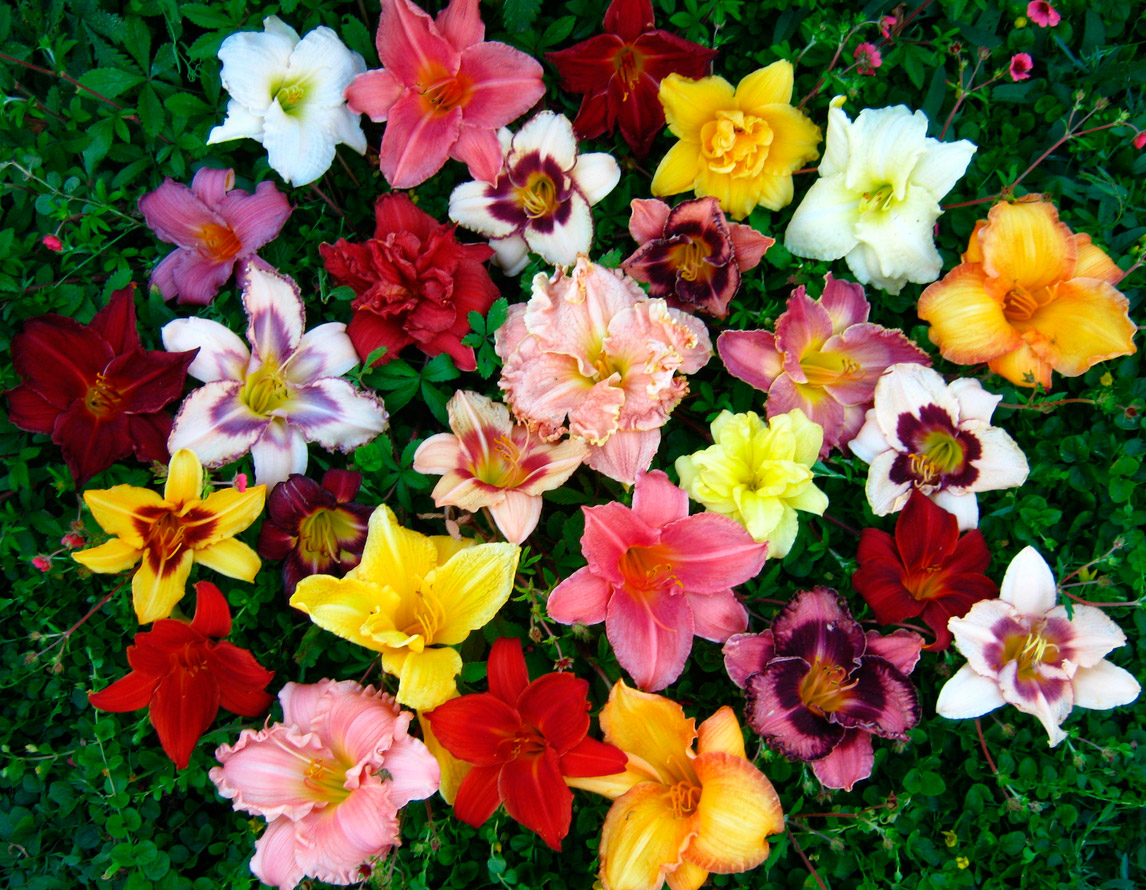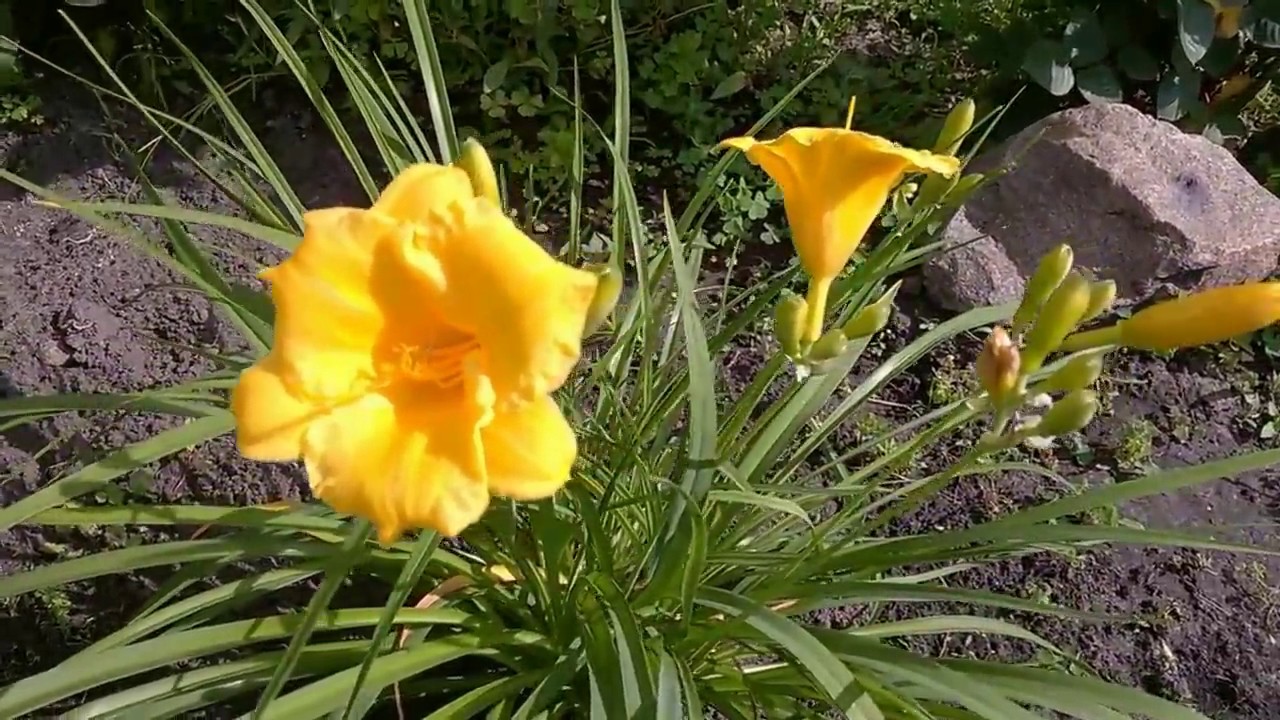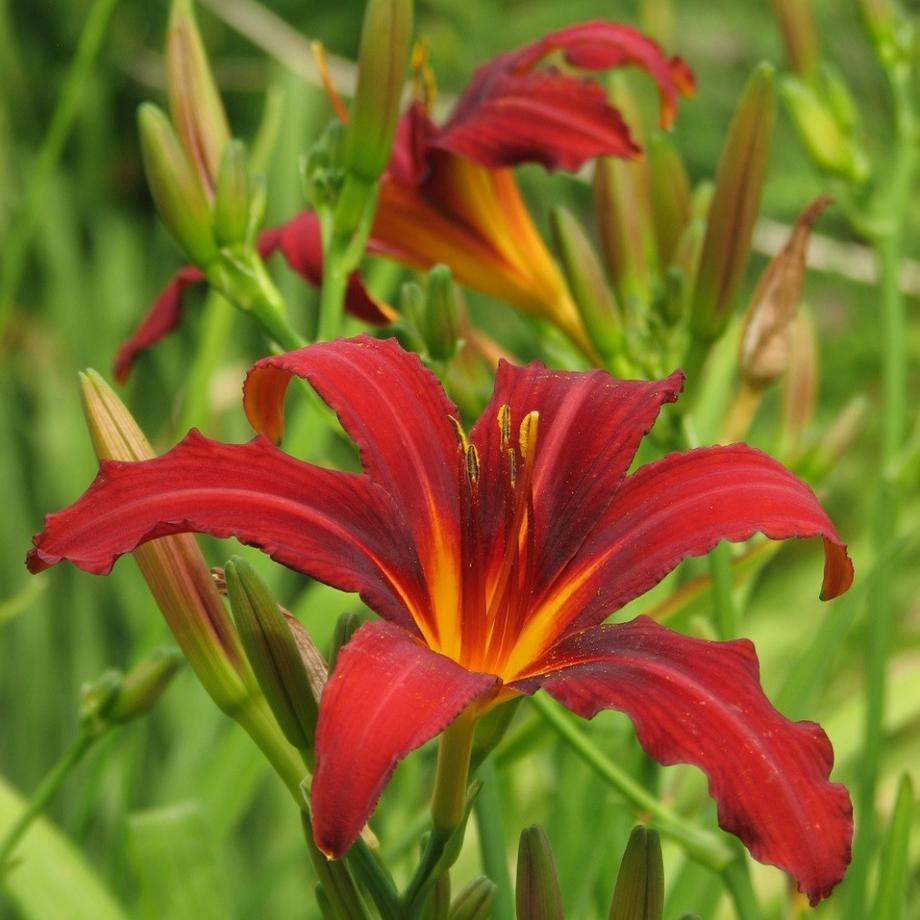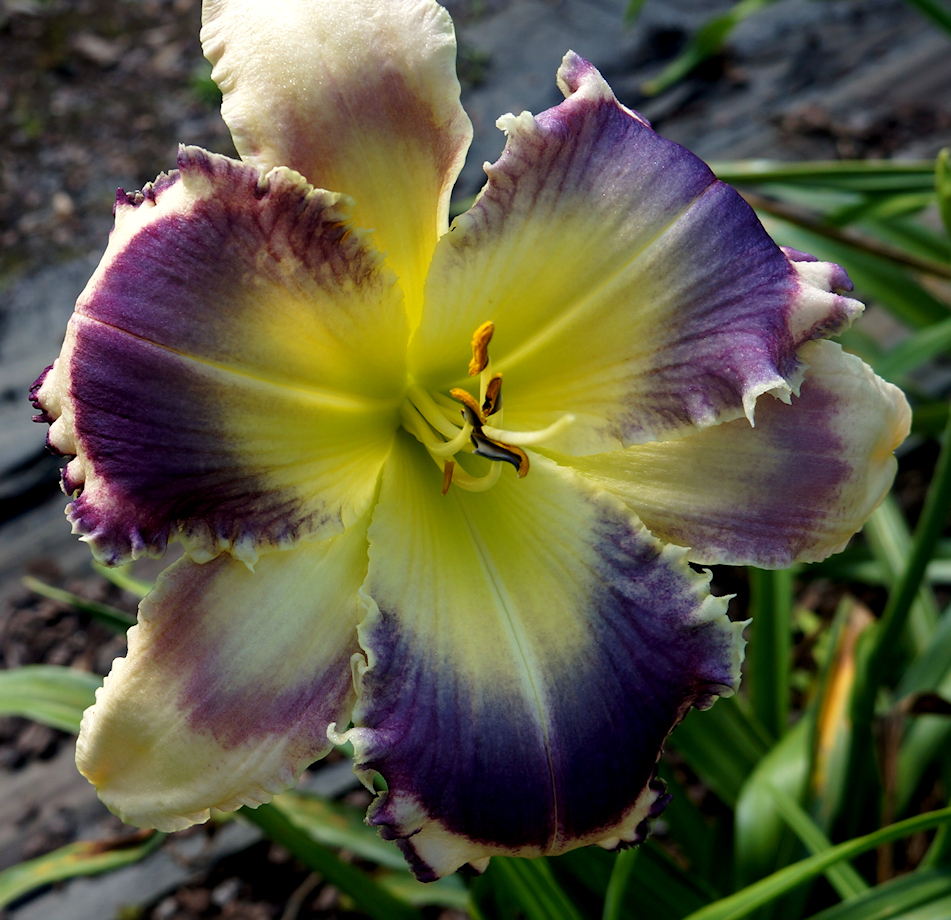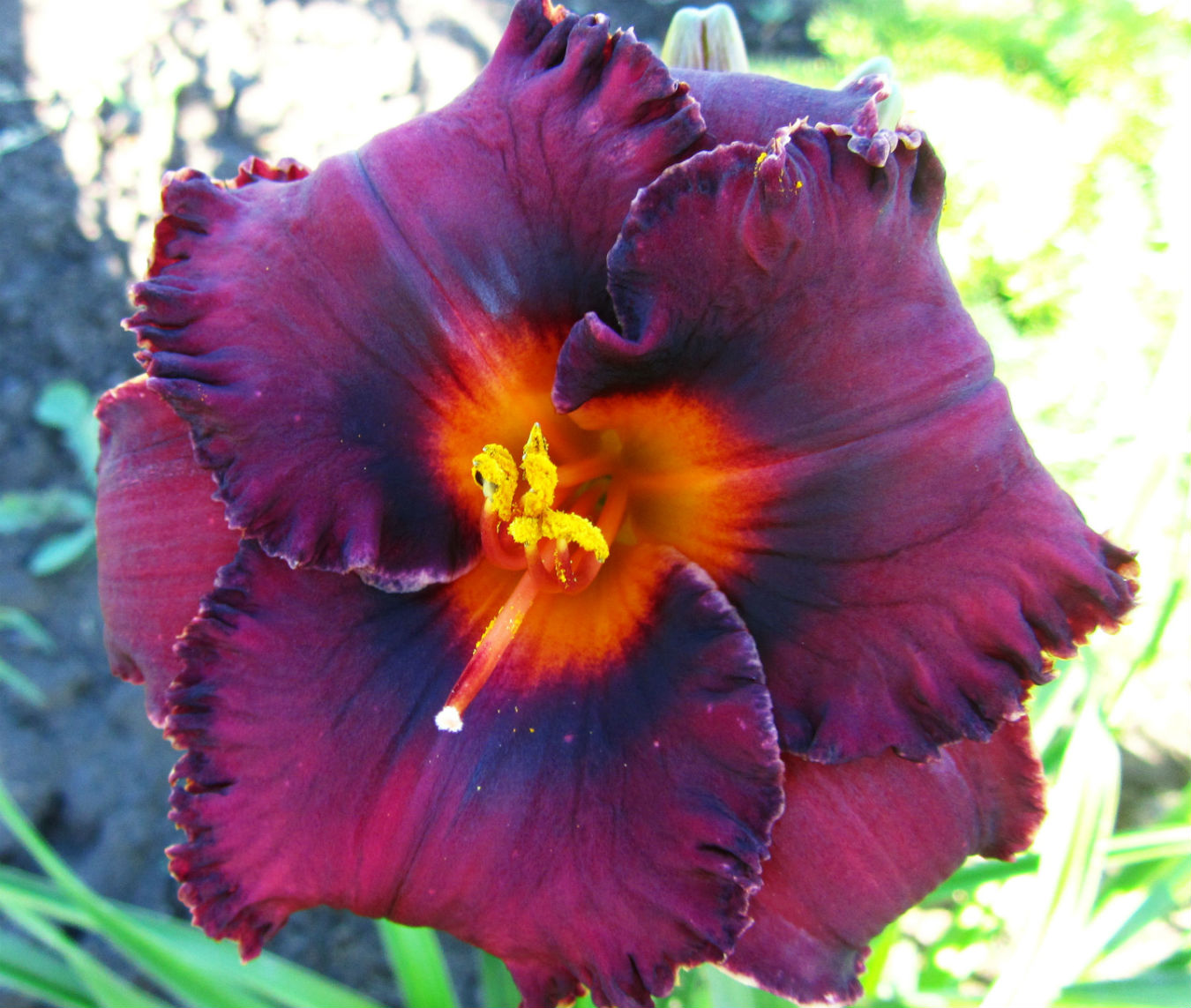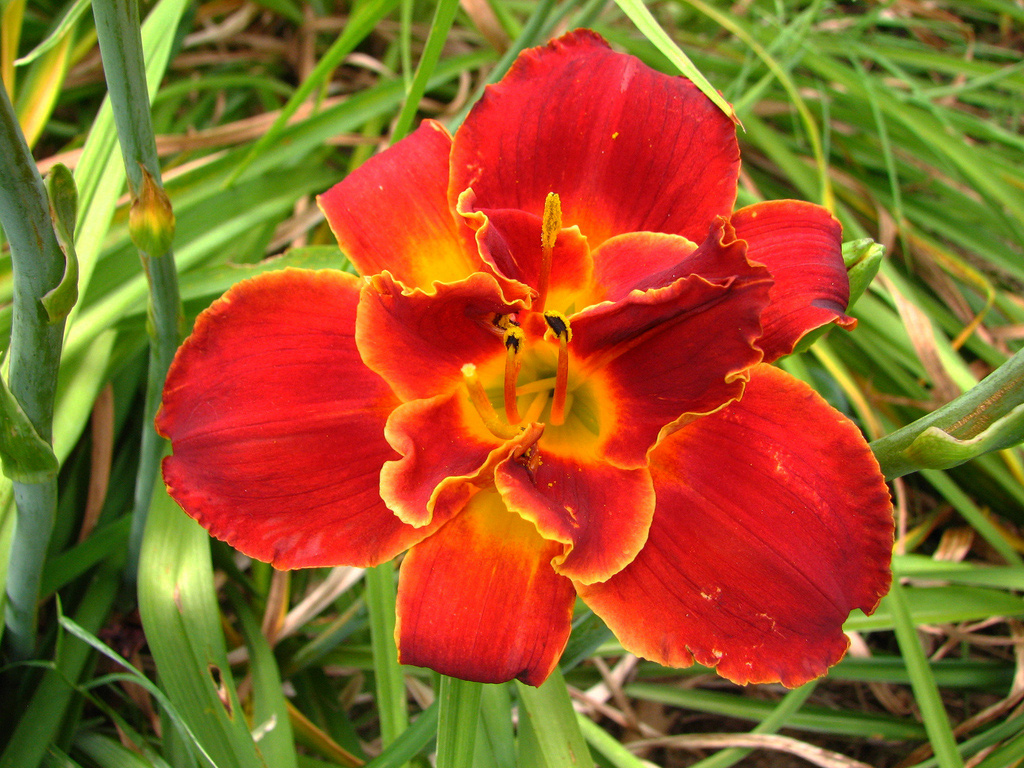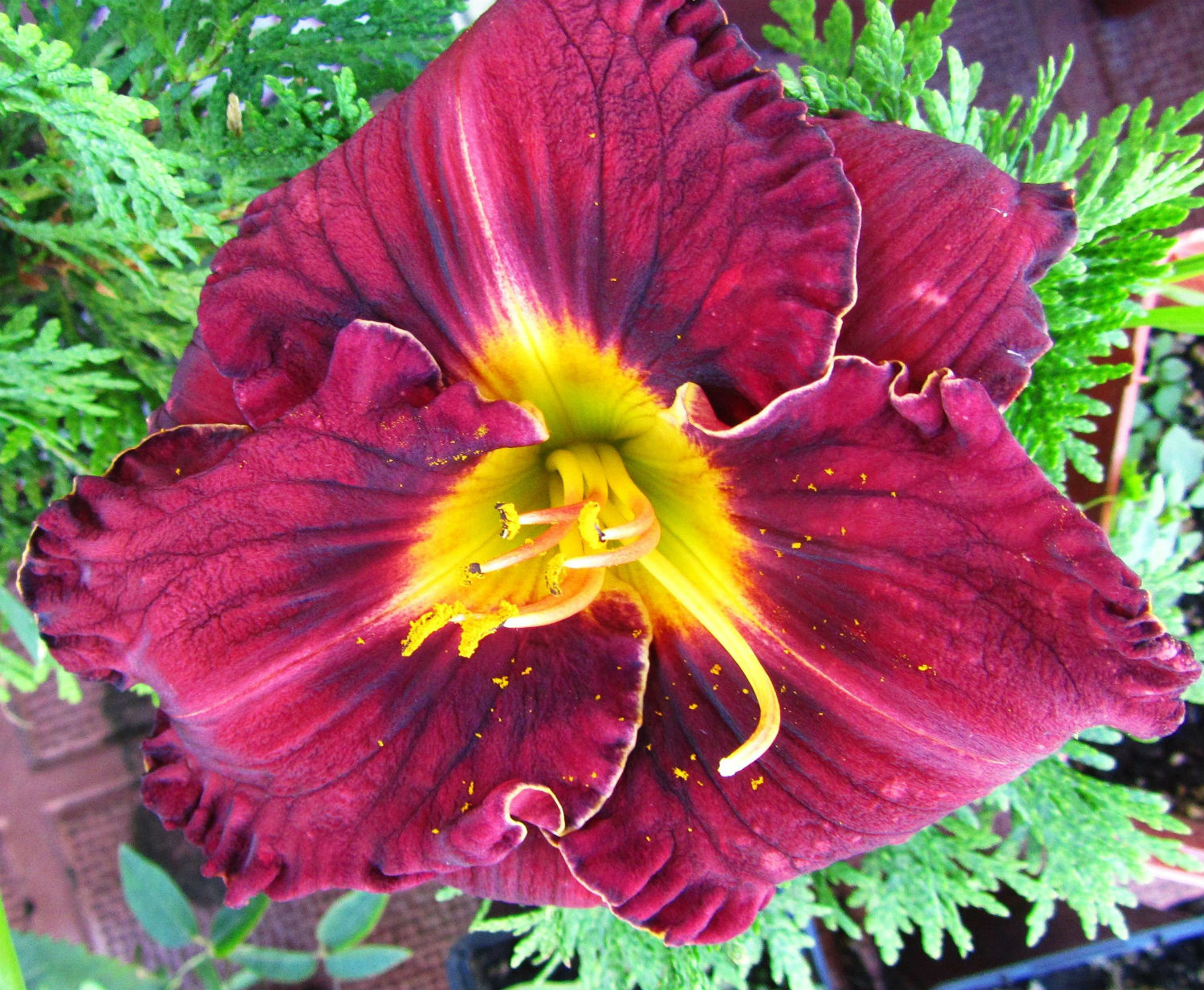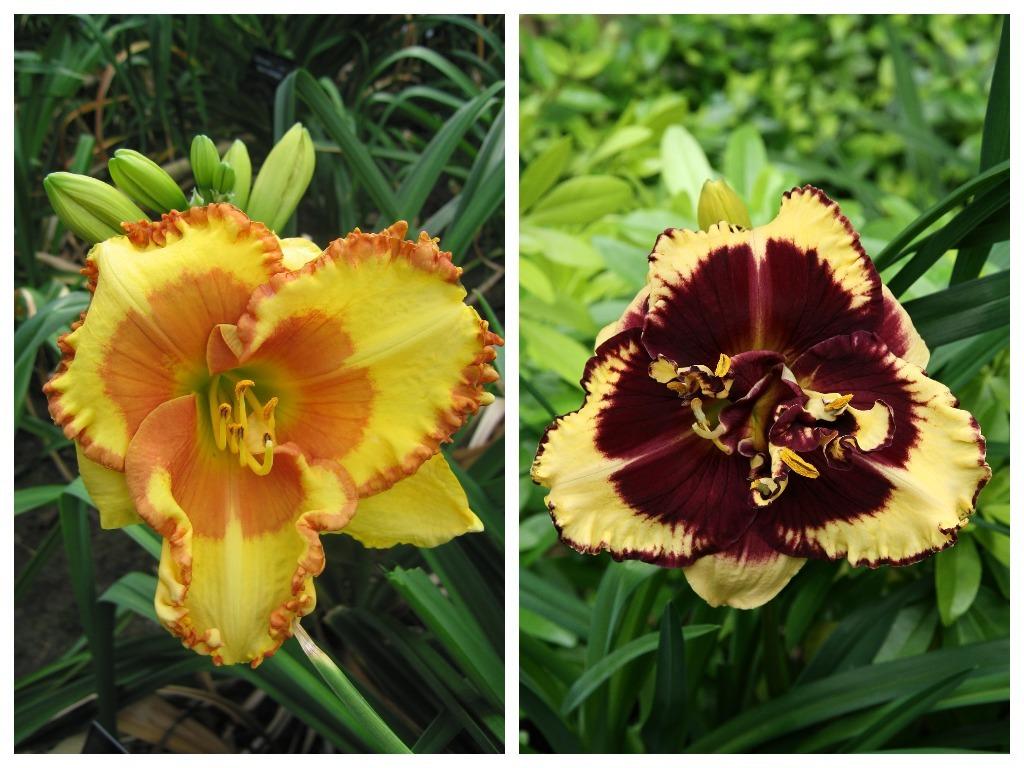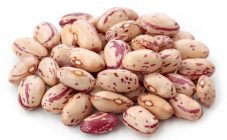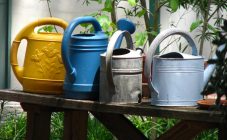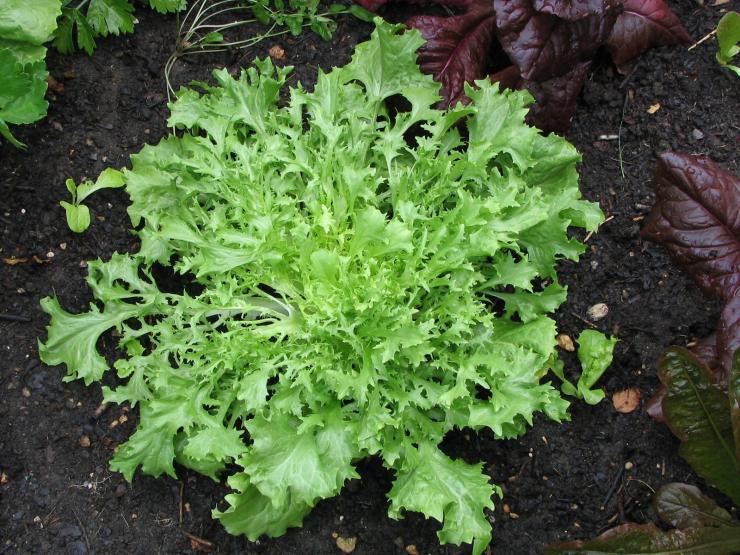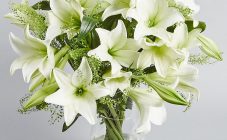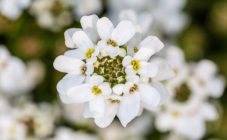Content:
- Short description
- Varieties of daylilies
- Daylily undersized
- Daylily high
- Daylilies border
- Daylily lemon yellow (lemon)
- Daylily brown-yellow (daylily red)
- Daylily yellow
- Daylily hybrid (Hemerocallis in Latin)
- Daylily small
- Daylily red
- Daylily orange ordinary
- Daylily blue / blue
- Dwarf daylily
- Daylily burgundy
- Daylily dark
- Daylily lilac
- Terry daylilies large-flowered
- Daylilies purple
- Daylilies variegated
- Daylily brown
- Daylilies pink
- Repeating daylilies
- The best varieties
- Recommendations for growing varieties
The cultivation of daylilies must begin with the correct selection of the species and variety. In nature, there are many varieties of this culture, which differ in external data. This allows you to diversify the choice and pick up items for every taste.
Short description
Daylily is a herbaceous perennial rhizome plant, used mainly for decorative purposes. Cultivated all over the world. Wild varieties are common in the Russian Far East, China, Japan, Korea, and southern Eastern Siberia.
It is used, as a rule, to create decorative compositions in gardens and orchards. In the countries of Southeast Asia, the buds and flowers of the plant in a fresh and dried state are used for food after boiling or stewing. The culture is also used in traditional medicine.
The roots are large, fleshy, cord-like, sometimes forming stolons. The foliage is straight and curved, two-row. Flowers are painted in various colors, usually large, collected in inflorescences of 2-10 pieces. Peduncles up to a meter or more, leafy, most often above the foliage.
Varieties of daylilies
When cultivating this culture, it is necessary to initially select the most spectacular looking varieties and species. It is these plants that can become a decoration of a garden or flower bed. The most beautiful species include specimens with flowers of various shapes, sizes, and colors.
Daylily undersized
This type includes a number of varieties, which are low daylily specimens. Most often they are used as a decorative decoration for rockeries or alpine hills.
Daylily high
This group is the opposite of the previous one and consists of varieties, the height of the peduncles of which exceeds 80 cm.The highest among them:
- Frans Hals;
- Lacey Dolly;
- Diana Taylor;
- Elegant Caddy;
- Forever Young;
- Jin, etc.
Daylilies border
Also known as miniature daylilies. They are characterized by a very small flower size, which is compensated by a long (about 4 months) flowering period. Main varieties:
- Diamond Circle;
- Capids Dark;
- Gadsden Firefly;
- Master Magic;
- Pandoras Boxing;
- Teenie Tempress.
Daylily lemon yellow (lemon)
It is considered the most original among all varieties of daylilies. It has very long, tubular, fragrant buds. Blooms at night, from the second decade of July to the twenties of August. In the autumn, the foliage begins to die off even before the onset of the frost period.
Daylily brown-yellow (daylily red)
It has large foliage, the length of which reaches a meter, and the width varies from 1.5 to 3 cm. Peduncles are strong and thickened, approximately 115 cm high. The outer corolla is dark yellow, the inner corolla is reddish-yellowish.Abundant flowering occurs in the first half of summer; fruiting does not occur. In this variety, there are both semi-double and double types of daylilies.
Daylily yellow
This type of daylily has flower stalks almost a meter high without foliage. The inflorescence includes 5-10 brilliant flowers of a rich lemon-yellow color with a pleasant characteristic odor. It blooms for 25 days in May-June. It reacts negatively to snowy winters and the presence of lime in the soil. There are both tall and undersized types (dwarf yellow daylily). The plant is most often used as a curb decoration.
Daylily yellow - varieties:
- Bonanza;
- Stella de Oro;
- Middendorf;
- Double River Wye.
Experts separate the early yellow daylily. This category includes some varieties that are classified as early blooming. They bloom in the second or third May decade. There are varieties with terry petals that look like velvet. The most popular of them is Ay he America.
Daylily hybrid (Hemerocallis in Latin)
Also known as garden daylily. A popular variety whose flowers bloom and wither in just one day. Peduncles vary in height from 30 to 100 cm. Inflorescences are large, made in the form of a funnel, contain several flowers, painted in different colors.
Daylily small
The plant is also found in the scientific literature as the lesser wolf locust. It is characterized by small beautiful bushes no more than 60 cm high. Peduncles usually exceed inflorescences and foliage. Inflorescences combine from 5 to 15 flowers. The flowers are light yellowish in color, small, monochromatic, characterized by a powerful pleasant odor.
Daylily red
One of the most pleasant-looking varieties with high decorative properties. It stands out with bright red inflorescences. They reach a height of about 80 cm. Blooming of buds occurs in the first half of July and lasts for a relatively long time. The flower does not fade in the sun. Many specimens do not emit any odor. The petals are oblong with slightly corrugated edges. Peduncles are strong and placed relatively high, slightly curved.
Daylily red - varieties:
- Red Ram;
- Barbara Mandrell;
- Big Red Wagon;
- Bold Paint and others.
Red daylilies with double inflorescences stand out especially effectively.
This group includes the following varieties:
- Diana Taylor;
- Double Red Royale;
- Frank Smith;
- Highland Lord, etc.
Daylily orange ordinary
The plant has dark green strongly curved dense leaf blades, the width of which reaches 3 cm. In the upper part of the plant there are branchy shoots about a meter long. The flowers are asymmetrical, up to 12 cm in diameter. Their central part is orange, with a red-brownish tint. The flowering process occurs in July. There is no smell in the inflorescences. There are terry varieties.
The most popular varieties are:
- Otumn Wood;
- Jazz Estival;
- Bow Vance Aegain;
- Encore;
- Viracocha;
- Hot Wire.
Daylily blue / blue
This category includes those varieties of daylily, the flowers of which are characterized by a pleasant blue or blue color. They are often found in gardens and flower beds.
The most common varieties from this category:
- Blue Angel;
- Baby Blue Ice.
Dwarf daylily
Plants from this category do not grow more than 30 cm in length. Inflorescences are usually miniature. Plants stand out for their perfect proportions. Among this category, there are usually varieties whose colors are different shades of yellow. These include:
- Penny Worth;
- Penny Irnd;
- Ini Winie.
Daylily burgundy
One of the most spectacular looking daylily species. The inflorescences have a compacted structure and retain their shape well. Under the sun's rays, burgundy inflorescences shimmer from red to black.
Daylily dark
A relatively small variety of daylilies, represented by only a few varieties. This is due to the fact that too dark color is generally uncommon for the culture in question. The most famous varieties:
- Black Prince;
- Black Stokins, etc.
Daylily lilac
This type of daylily is distinguished by its delicate and clean coloring. There were initially few varieties from this group, however, breeding work in breeding plants with lilac inflorescences has recently been intensified, as a result of which today the assortment is represented by the following varieties:
- April Smith;
- Barbara Morello;
- English Levender;
- Iceicles;
- Mississippi Man, etc.
Terry daylilies large-flowered
A relatively large category of daylilies, which combines varieties with double petal and large flower sizes. The combination of these two traits significantly increases the decorative qualities of plants.
This includes popular varieties such as:
- Knight Ambers;
- Lacey Dolly;
- Double Dream;
- Siloam Double Classic;
- Spotted Fever.
Daylilies purple
One of the most common types of daylilies. It is quite wide due to the fact that it includes plants not only of purple color, but also of other colors:
- lilac;
- fuchsia;
- amethyst;
- indigo;
- lavender;
- purple;
- dark lilac;
- violet.
The main varieties of this group:
- Bella Note;
- Briar Patch;
- Dark Moon Rising;
- John Todd;
- Marrakesh;
- Pastor Zeta, etc.
Daylilies variegated
One of the most remarkable species of daylilies, characterized by a predominantly striped foliage. In some cases, the leaves are covered with spots. There are relatively few varieties in this group, the most common of which are:
- Golden Zebra;
- Secured Border.
Daylily brown
Another small group of varieties, consisting of plants with brown petals. Main varieties:
- Milk Chocoled;
- Old Termites.
Daylilies pink
A very common category that includes specimens with petals ranging from light pinkish to purple-red. The most famous varieties:
- Night Bacon;
- Mildred Mitchell;
- Best-seller;
- Janice Brown;
- Darla Anita, etc.
Repeating daylilies
This group includes those varieties that can bloom again after the completion of the first flowering after a short dormant period. This ability is present in almost all hybrid varieties of southern origin, bred since the early 1980s. A variety that does not possess this property is most often classified as commercially unsuccessful.
The best varieties
Based on the above information, the category of the best varieties of daylilies should include:
- Frans Hals;
- Bonanza;
- Stella de Oro;
- Night Bacon;
- Double River Wye;
- Best-seller;
- Pandoras Boxing;
- Knight Amber;
- Lacey Dolly;
- Double Dream;
- Red Ram;
- hybrid daylily White star;
- Orange Grove;
- daylily Orange Nassau;
- Black Stokins, etc.
Recommendations for growing varieties
Soils and fertilizers
Daylilies prefer light, structured soils with a neutral or slightly acidic reaction. The land must be water-absorbing. It is necessary to dig up the earth to a depth of 30 cm. Plants are bad for the close occurrence of groundwater. It is best to grow them in the vicinity of tagetes or marigolds. The most suitable predecessors are green manure crops:
- Vika;
- lupine;
- calendula.
In the first year after planting, no top dressing is applied at all. Then, special complex fertilizers for flowers are applied twice or three times annually. At the beginning of autumn, phosphorus-potassium substances are introduced. Nitrogen in its pure form, as a rule, is not used to prevent excessive growth of vegetative mass. Varietal specimens require less feeding than wild species
Irrigation
In hot weather, it is recommended to water abundantly once a week, and in rainy periods, once every two weeks. The liquid during irrigation should not get on the buds and flowers to avoid the formation of brown marks. In this regard, it is recommended to carry out the introduction of water at the root. Usually watered either early in the morning or after sunset. For irrigation, settled heated water is used.
If there are no slugs on the site, then upon completion of irrigation, it is necessary to mulch the soil in the bust sector with a layer 6-7 cm high. It is allowed to use as a mulching material:
- sawdust;
- needles;
- foliage;
- chopped grass, etc.
Plant protection
Plants are rarely affected by pests. In some cases, they become objects of attacks by slugs, which are usually collected by hand. When the first buds form, thrips may appear. To prevent this from happening, the plant and soil in the bite sector are abundantly sprinkled with ash. For aphids and winter scoops, insecticides are used.
When cultivated in areas where water stagnated in the spring, the plantings run the risk of being struck by rot of the root collar. At the beginning of the development of the disease, the plant should be dug out of the ground, the root system should be cleaned, and kept in a solution of potassium permanganate for 10 minutes. After that, the roots are dusted with foundation and the plant is planted in a new place.
Wintering plants
The daylily is characterized by high winter hardiness, allowing it to endure frosts down to -25 ° C under a dense snow cover without problems. In the absence of such a cover, plantations do not feel so comfortable. This is most important for those plants that were planted in the fall. In this regard, one of the parts of plant care is to cover it for the winter with the following materials:
- foliage;
- sawdust;
- straw;
- spruce branches.
Having chosen the appropriate type and variety, you must carefully familiarize yourself with the cultivation technique in specific conditions. The combination of these two factors allows you to get beautiful decorative daylilies.
